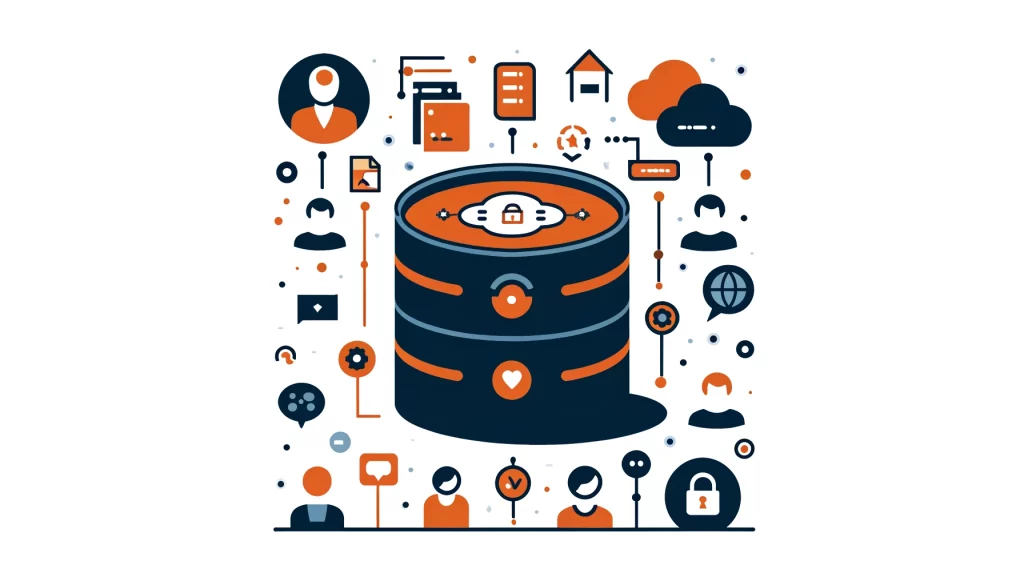
The Role of Data Democratization in Modern Data Management

In today’s data-driven world, organizations constantly encounter information from various sources, including social media, customer interactions, and internal systems. The pressure to leverage these data insights to improve business performance and gain a competitive edge is immense. However, making sense of this vast amount of data can be a daunting task, especially for non-technical employees. Data democratization helps bridge the gap between data and decision-makers, making information more accessible to everyone.
What is Data Democratization?
Data democratization is the process of making digital data accessible, understandable, and actionable for non-technical users within an organization. It aims to simplify data access and usage for non-tech experts. This will help people make informed decisions.
The goal is to make data more accessible and user-friendly. Companies can help employees use data insights by providing access to data without needing IT or data expertise.
Giving employees access to data enables this. They do not need to have IT or data expertise. Organizations achieve this by providing employees with easy access to data.
Companies can also eliminate the need for IT or data specialists by making data more user-friendly. This helps create a culture of using data throughout the organization.
Why is Data Democratization Important?
Competitive Advantage
Employees from different departments can access data. This helps them find important insights. These insights help the company stay ahead of the competition. By empowering frontline workers with data, organizations can quickly identify trends, spot opportunities, and adapt to changing market conditions.
Faster Decision-Making
Data democratization allows employees to easily access data and make fast decisions without needing special teams for reports. This agility can be a game-changer in fast-moving industries where timely decisions are critical.
Increased Efficiency
Organizations can streamline processes and reduce IT and data teams’ workload by empowering employees to access and understand data. Additionally, data democratization can help identify and eliminate inefficiencies, as employees can spot areas for improvement in their own work processes.
Enhanced Collaboration
Data democratization fosters a culture of collaboration and knowledge sharing. When everyone can access the information, workers from different parts of the company can work together. They can study the data, share ideas, and come up with solutions. This fosters innovation and leads to better problem-solving.
Challenges and Concerns
Data democratization has many benefits, but organizations must also address challenges and concerns that come with it.
- Data Silos: When data scatters across various locations or systems, establishing a single, reliable source of information becomes challenging. To solve this problem, organizations need to invest in integrating and consolidating data. This will help break down silos and create a unified view of data.
- Data Quality: Ensuring the accuracy, completeness, and reliability of data is crucial for effective decision-making. Organizations must implement robust data governance practices, including data cleansing, validation, and monitoring, to maintain high data quality standards.
- Data Security and Privacy: As more people gain access to data, the risk of security breaches and privacy violations increases. Organizations must implement strong data governance policies and access controls to protect sensitive information from unauthorized access or misuse.
- Skills Gap: Data democratization requires employees to have a certain level of data literacy and analytical skills. Organizations must invest in training and education programs to bridge this skills gap and empower employees to become data-savvy.
Get Start with Data Democratization
To embark on a data democratization journey, organizations can follow these steps:

- Define Clear Objectives: Define clear objectives and desired outcomes, ensuring alignment with business goals.
- Identify High-Value Opportunities: Focus on areas where data insights can have the greatest strategic impact and likelihood of success.
- Assess Data Readiness: Conduct a thorough assessment of your organization’s data landscape, identifying data sources, evaluating data quality, and assessing the current state of data governance.
- Invest in User-Friendly Tools: Provide employees with intuitive, self-service analytics tools that allow them to explore and visualize data without requiring extensive technical knowledge.
- Establish Data Governance: Implement a robust data governance framework to ensure data quality, security, and privacy.
- Foster a Data-Driven Culture: Encourage a culture of data literacy and curiosity, celebrating data successes and sharing best practices across the organization.
- Start Small and Scale: Start with a small pilot project, gather feedback, and gradually scale to other areas of the organization.
Enabling Technologies
Several technologies have emerged to support data democratization efforts:
- Cloud Storage: Storing data in the cloud can help eliminate data silos. It can also create a single reliable source of information. This source is easy to scale, flexible, and accessible.
- Data Virtualization: Users can easily access and manipulate data without needing to understand technical complexities. This allows them to create a unified view of data from different sources.
- Self-Service BI Tools: Apps like Tableau, Power BI, and Qlik make it simple for non-tech users to analyze and visualize data. They have easy-to-use interfaces, drag-and-drop features, and ready-made templates.
- Data Catalogs: These provide a centralized repository of metadata, making it easier for employees to discover, understand, and access data, while promoting data governance.
- AI and Machine Learning: They can generate insights by identifying patterns, predicting outcomes, and providing recommendations. These insights rely on historical data.
Real-World Examples
In the retail sector, a large chain introduced a self-service BI tool for store managers. This helped them access and analyze sales data easily. They could quickly identify trends and optimize inventory. They also made informed decisions to improve store performance.
In healthcare, an organization adopted a data virtualization platform. Combining data from different sources helped doctors and care teams see a complete picture of a patient’s health. Consequently, they could make more informed treatment decisions.
In manufacturing, a company implemented a cloud-based data storage solution alongside self-service BI tools. This move democratized access to production data, allowing employees to pinpoint bottlenecks, optimize production schedules, and minimize waste.
Conclusion
Data democratization is a powerful approach that can unlock the full potential of an organization’s data assets. By breaking down barriers and empowering employees with data insights, companies can make better decisions, innovate faster, and gain a competitive advantage. However, successful data democratization requires careful planning, strong governance, and ongoing support.
Organizations need to invest in tools, technologies, and training to promote data democratization and cultivate a data-driven culture that values curiosity, collaboration, and learning. They must address challenges like data silos, quality, security, and privacy, and bridge skill gaps among employees.
As data volumes rise and new technologies emerge, organizations must continuously adapt their data democratization strategies to stay ahead. Data democratization is an ongoing process, not just a one-time task.
This mindset can help companies thrive in the data-driven era. It encourages innovation and the ability to capitalize on opportunities. It also aids in maintaining a competitive edge. This approach promotes innovation, allows for seizing opportunities, and helps maintain a competitive advantage.
If you found this article on data democratization insightful and want to learn more about putting these concepts into practice, we invite you to join our upcoming product demo session. During the session, you’ll discover how our cutting-edge solution addresses data protection challenges while empowering your organization to harness the full potential of data democratization.
